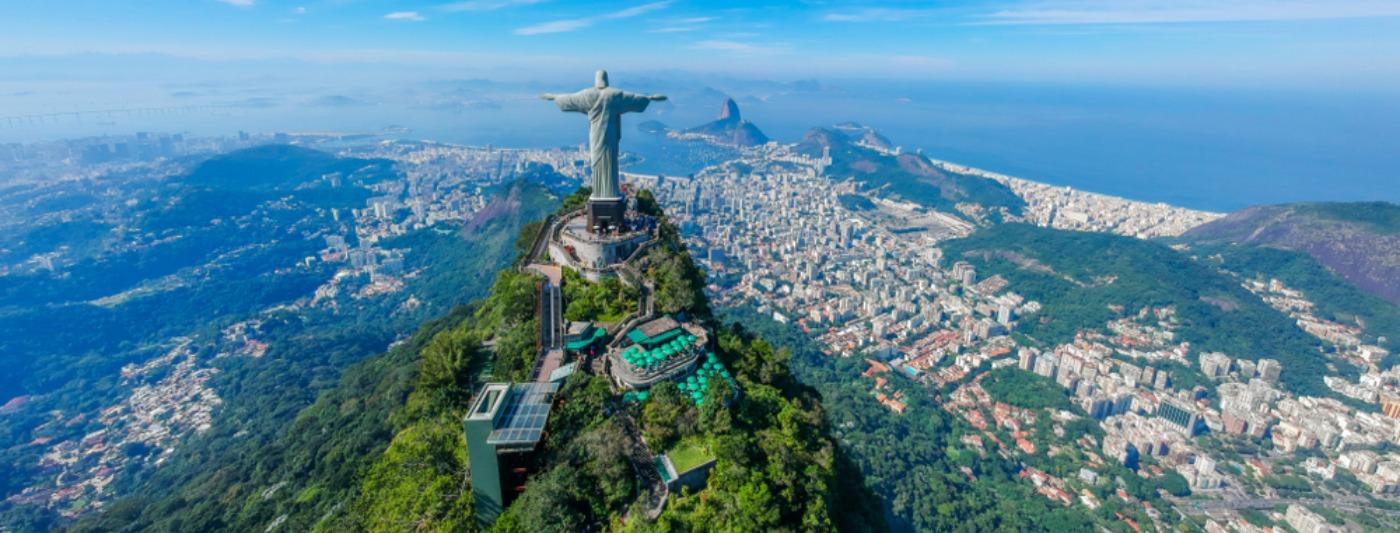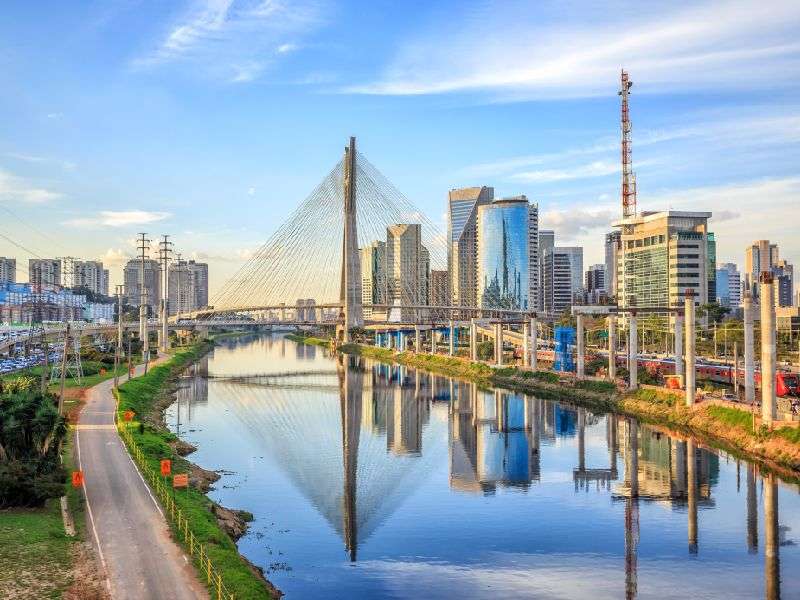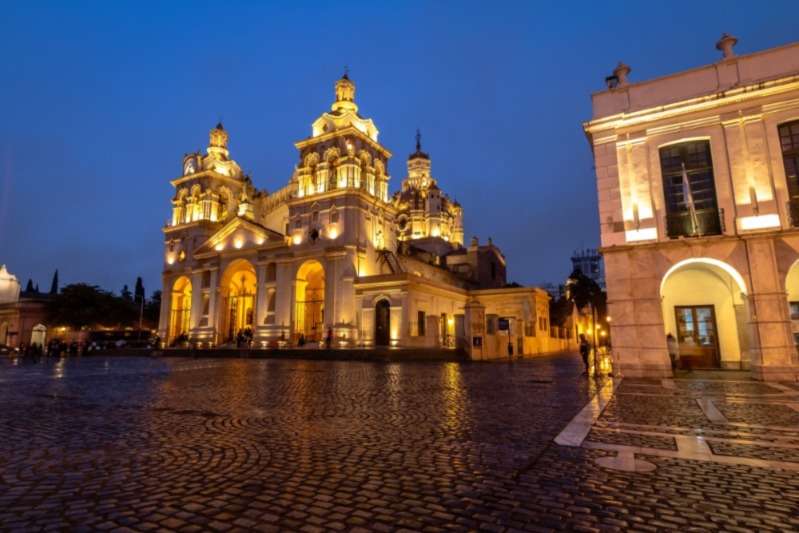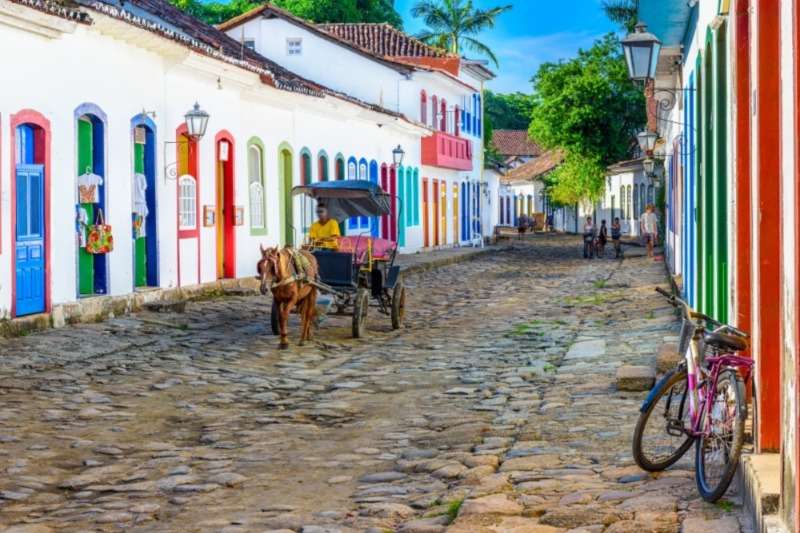
Christ the Redeemer; A New Wonder of the World
The main draw and must-do activity in Rio de Janeiro, Brazil, is Christ the Redeemer. Before visiting Cristo Redentor, one of the most well-known monuments in the world that guards and overlooks Rio de Janeiro, our travel guide will tell you everything you need to know.
Photos do not do the scene justice; the actual thing is even more stunning. Although the concept for the statue's placement there dates back even further, Rio de Janeiro has been guarded by it for more than 90 years, and today, it's doubtful anybody can envisage Rio's cityscape without the statue looming over Corcovado Mountain.
The most popular and recognizable monument in Rio is Christ the Redeemer, which is followed closely by other outstanding sites like Sugarloaf Mountain or Copacabana by tourists of all faiths. Contrary to Sugarloaf Mountain, the statue of Jesus was included in the 2007 list of the "New 7 Wonders of the World," and ever then, its star has been shining brightly.
History
In the middle of the 1850s, Vincentian priest Pedro Maria Boss proposed building a Christian monument on Mount Corcovado in honor of Princess Isabel, the regent of Brazil and the child of Emperor Pedro II, but the plan was rejected. Due to the separation of church and state after the nation became a republic in 1889, the projected statue was abandoned.
In 1920, the Catholic Circle of Rio put out a second suggestion for a famous statue to be erected on the summit. For the purpose of raising funds and gathering signatures in favor of the statue's construction, the group planned an occasion they titttcalled Semana do Monumento (or "Monument Week"). The cause of the organization was what they called "Godlessness" in society. Brazilian Catholics made up the majority of the donors.
A depiction of the Christian cross, a statue of Jesus holding a globe, and a pedestal representing the world were among the concepts explored for the "Statue of the Christ." The figure of Christ the Redeemer holding out his arms in peace was selected.
The statue was created by local artists Carlos Oswald and engineer Heitor da Silva Costa. Gheorghe Leonida, a fellow Romanian artist who had studied sculpture at the Fine Arts Conservatory in Bucharest and in Italy, was commissioned by Landowski in 1922.
This enormous statue of Jesus, which rises more than 200 feet high on a 2,300-foot mountain, has gained notoriety as a representative of Rio de Janeiro, Brazil, and as a modern wonder of the world.
Many people in Brazil's predominantly Roman Catholic society were troubled by what they perceived to be a spreading "godlessness" after World War I. The official separation of church and state that resulted from the nation becoming a republic in 1893 contributed to some of this. By building a major symbol in Rio, the nation's capital at the time, Catholics believed they could reclaim the land for Christianity. One suggestion was to erect a big statue of Christ. Since the 1850s, when it was first put up by the Vincentian priest Pedro Maria Boss, little has been done to implement this plan.
Near first, it was suggested that a bronze figure of Christ be erected atop the Sugar Loaf, a sizable, precipitous rock outcrop at the entrance to Guanabara Bay in Rio. However, it was deemed that a preferable position would be on Mount Corcovado's higher top, which looked over the city. One suggestion was to erect a big statue of Christ.
Fun Fact
According to a widely held myth, Brazil received Christ the Redeemer as a gift from France. That is untrue, though. A 1.30-meter-long carved heart is located inside the statue. During the statue's erection, a cogwheel railway was used to carry workers and supplies up the mountain. The monument's head is 30 tons in weight. The feet of the statue is not visible from the viewing area. They do, however, exist. The pedestal serving as the structure's support is fastened to the feet.
Lightning rods actually make up the statue's crown. The monument experiences 20 lightning strikes monthly on average during storm seasons. Rio de Janeiro will commemorate the statue's 90th anniversary in 2021.
As a Wonder of the World
The criteria used to choose the Seven Wonders of the Modern World included beauty, complexity, historical significance, cultural relevance, and architectural significance. The results of this informal vote were idealized by a Swiss organization. More than 100 million votes were cast in a global poll that included votes cast over the phone and the internet, choosing between 200 monuments from across the world. At Portugal's Estádio da Luz, the announcement of the chosen monuments took held on July 7, 2007.
The Restoration of the Statue
Christ the Redeemer has endured a lifetime of wear and tear from nature. The statue has undergone a number of renovations to keep it looking its best. In 2008, a strong lightning strike inflicted some damage to the head, fingers, and eyebrows of this huge statue. Despite the lightning's great force, most of it was earthed because of the soapstone's insulation. 2014 also saw considerable deterioration to the monument. In truth, a lightning strike that damaged the statue's head and severed the tip of its finger occurred not far from the 2014 World Cup. To repair the damage, quick measures were taken.
How it Was Erected Up High
How the earth did the statue get up there in the first place is just one of the many questions that stumps everybody who sees the statue for the first time.
The monument was really constructed on Mount Corcovado due to its enormous size, and all the necessary supplies (as well as the workers) were brought up the mountain on a little cog-wheel railway; (which at the time was mainly used to take tourists to the top of the mountain to see the vistas).
Construction workers utilized long wooden poles as scaffolding and had to climb them in order to arrange all the components in the proper locations. This task, which must have been extremely difficult in every way, nevertheless signified the inhabitants' strong religious belief beyond all else.
How To Get to Statue
Personalize your fantastic trip to Brazil now!
Train Trip
The 20-minute trip to the monument is made on the century-old, environmentally friendly Corcovado train via the Atlantic Forest in Tijuca National Park. It is the most well-liked and, in our opinion, the most effective strategy for success. The trip, which was inaugurated in 1884 by Emperor D. Pedro II, is the oldest tourist route in the nation. Tickets include access to the monument and round-trip transportation. Purchases can be made at the attraction's box office or online. To prevent lines, especially during the busiest times of the year, we strongly advise purchasing your ticket in advance. The Cosme Velho neighborhood includes the Corcovado railroad station. Uber or the line 583 bus from Copacabana are the two best ways to get there. Although there isn't a close subway station, you can get off in Largo do Machado. Take the bus that connects to the subway and travels to Cosme Velho from there. Get off the bus in front of the Corcovado train station or the Church of S. Judas Tadeu.
Van
Taking a van, the official mode of transportation for Tijuca National Park, is another option for getting to the monument. All vehicles have air conditioning and have earned the green mark for their low pollutant emissions. They stop briefly at the Paineiras visitor center before continuing their ascent through the Tijuca forest to the monument. The transportation leaves from Largo do Machado, Copacabana, Barra da Tijuca, and Paineiras Park, among other locations. Tickets also come with roundtrip transportation and access to the monument. Depending on where you depart, the pricing varies (Copacabana and Largo do Machado are the same price).
Trek/Hike
Trekking Despite the fact that we enjoy hiking and think it would be a great idea to see Christ the Redeemer by doing so, we must caution you that this specific hike is neither safe nor easy. In the Jardim Botânico neighborhood's Parque Lage, the hike to the monument's entry starts. It is a strenuous, three-hour hike that calls for more advanced physical fitness. Although it begins out easily, it quickly becomes steep, and at some points you must use chains and ropes to pull yourself up to the summit.
When to Visit Christ the Redeemer
One of the most popular tourist destinations in the Americas, Rio is constantly crowded with visitors. And to make matters worse, Christ the Redeemer is the most well-known landmark in the city. You see what I mean. The area is packed. However, there are a few brief intervals when you won't feel crammed in like sardines.
First, avoid going on the weekends. The days leading up to New Year's Eve, Christmas, and Carnival should also be avoided. Finally, visit them either when they open at 8 am or when they close at dusk. Visits to Cristo Redentor are essentially impossible without crowds. Nevertheless, using these suggestions will enable you to steer clear of the busiest times. Additionally, picking a sunny day to go is crucial. You won't see anything if the cloud cover is dense, and even the statue will be difficult to view.
related tours

São Paulo in three days
3 Days / 2 Nights
From
$ 215

Highlights of Latin America Tour
9 Days / 8 Nights
From
$ 1944

Best of South American Tour
12 Days/11 nights
From
$ 3473

Trip to Brazil
9 Days / 8 Nights
From
$ 2038
